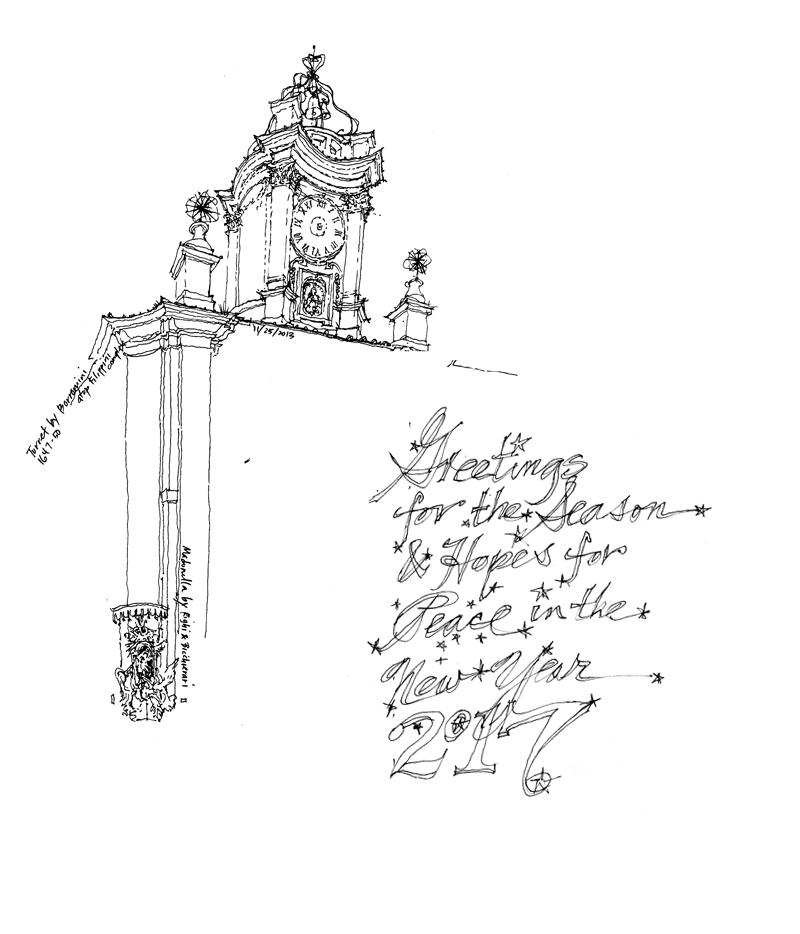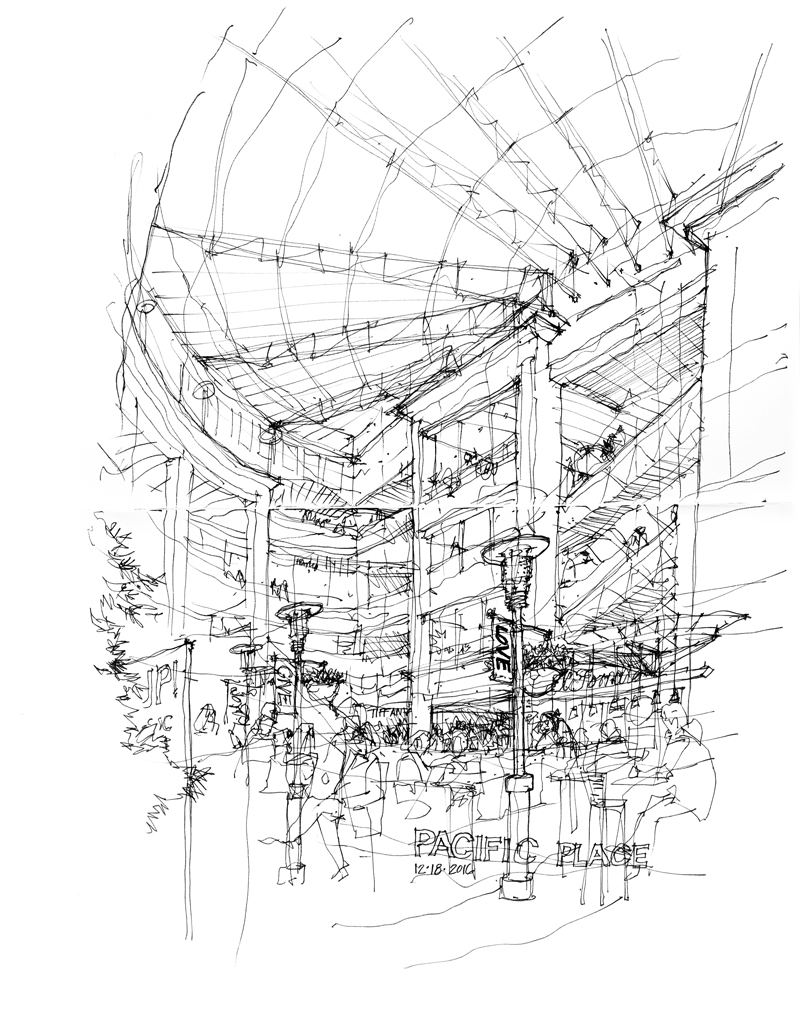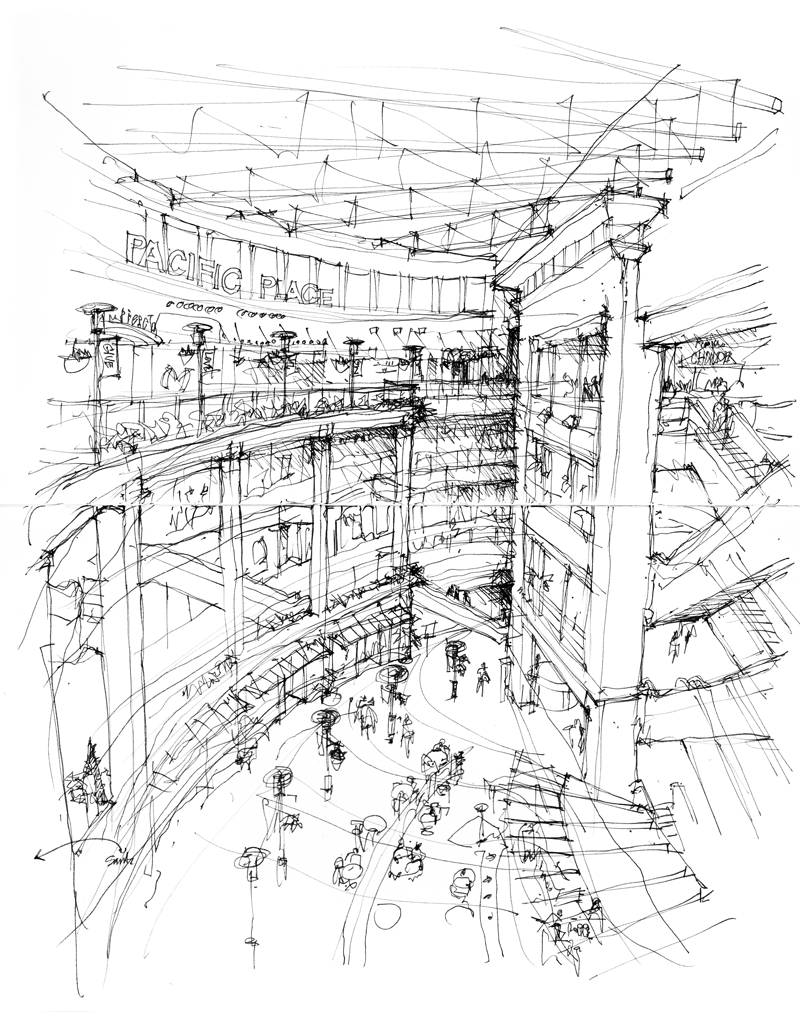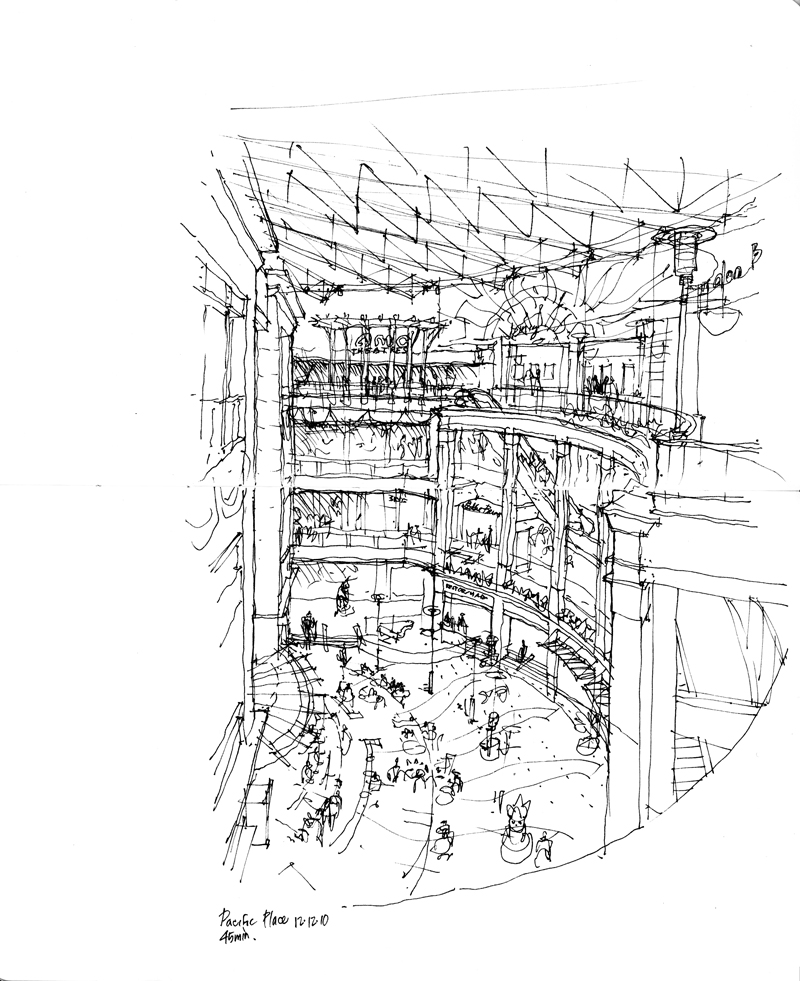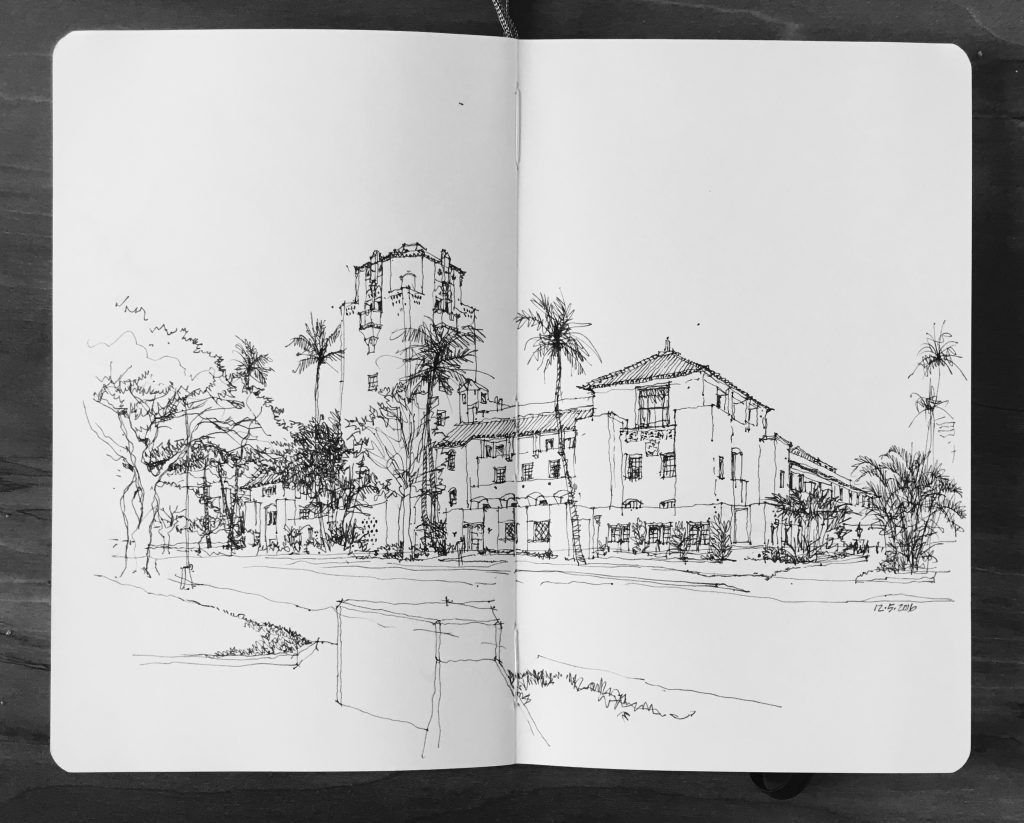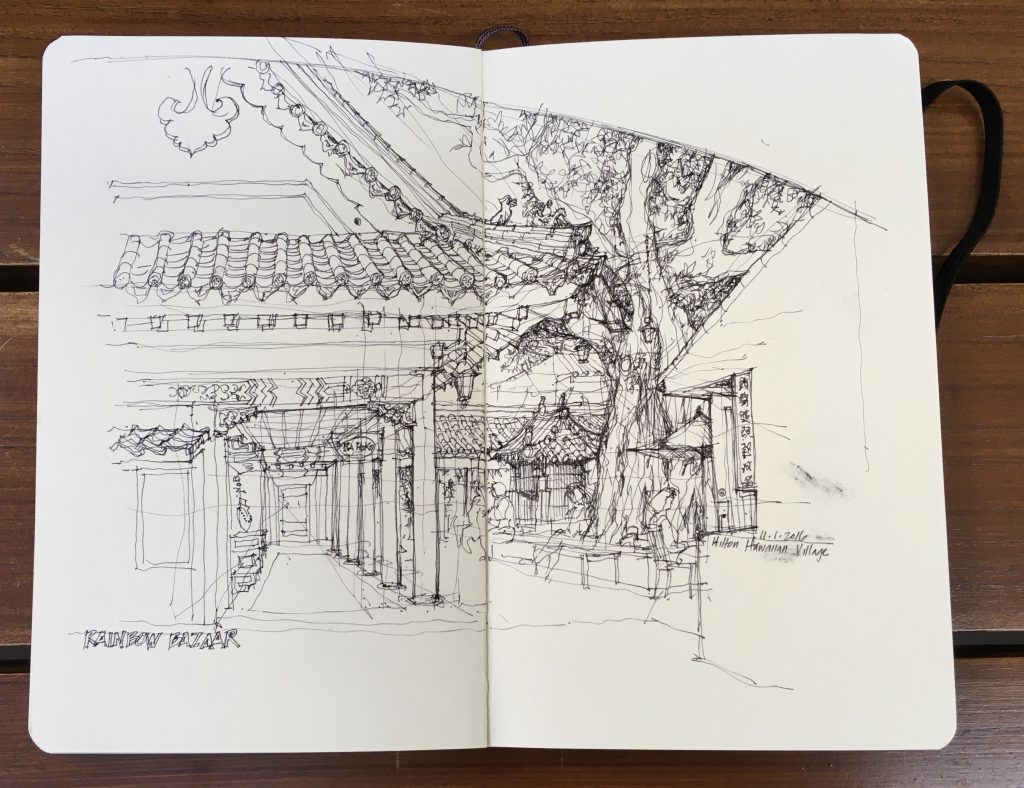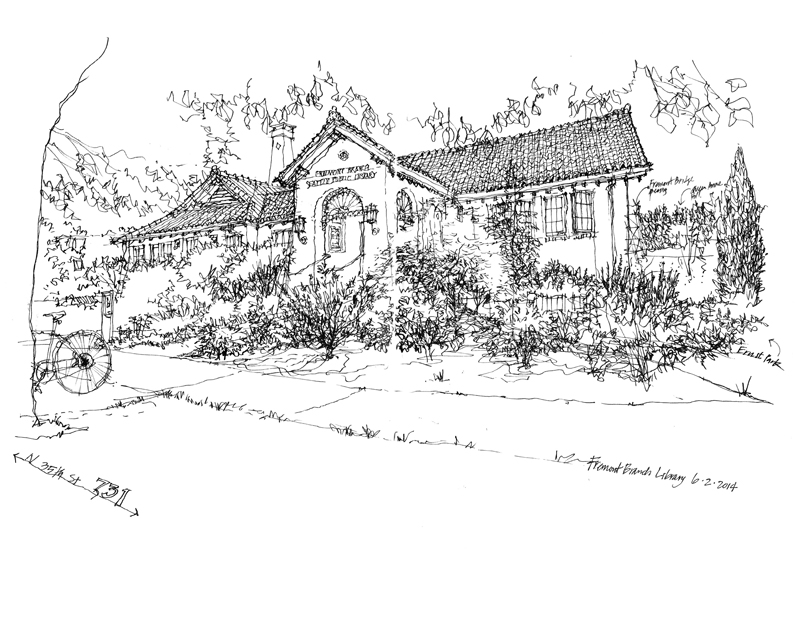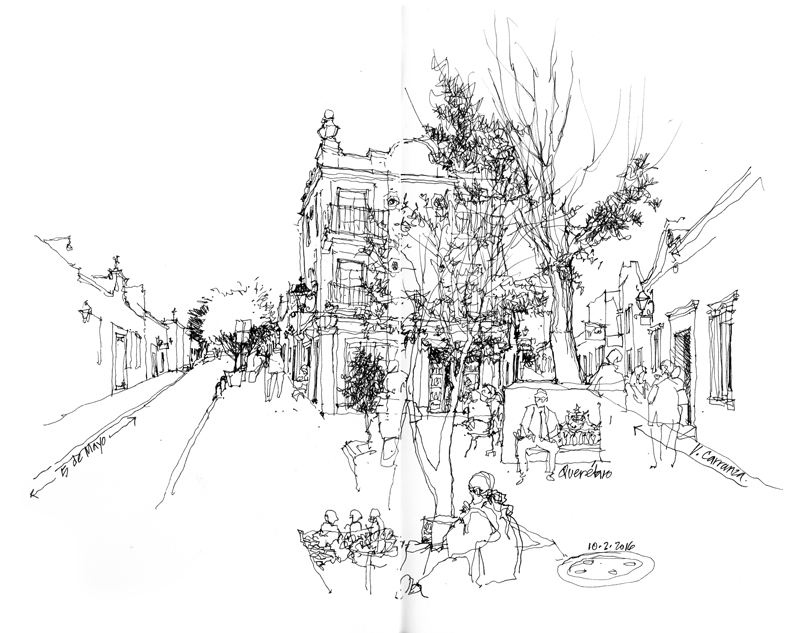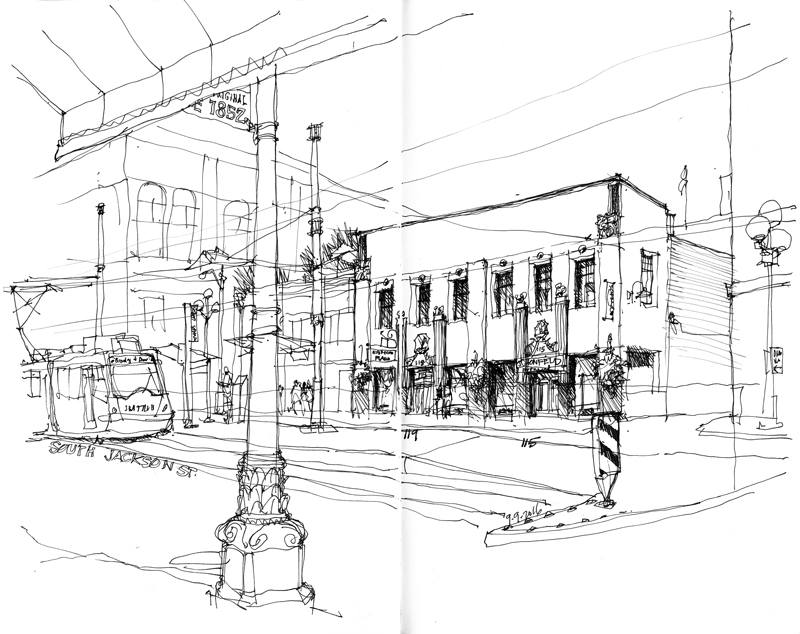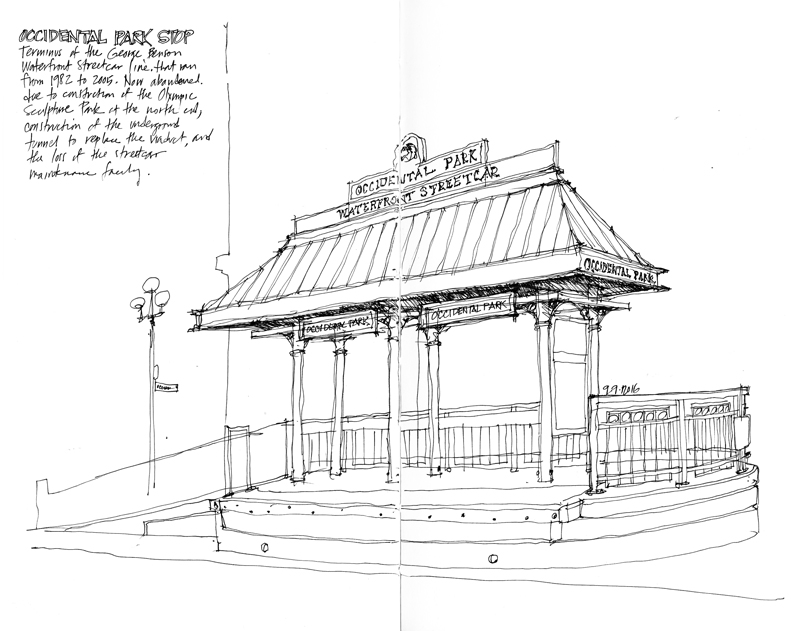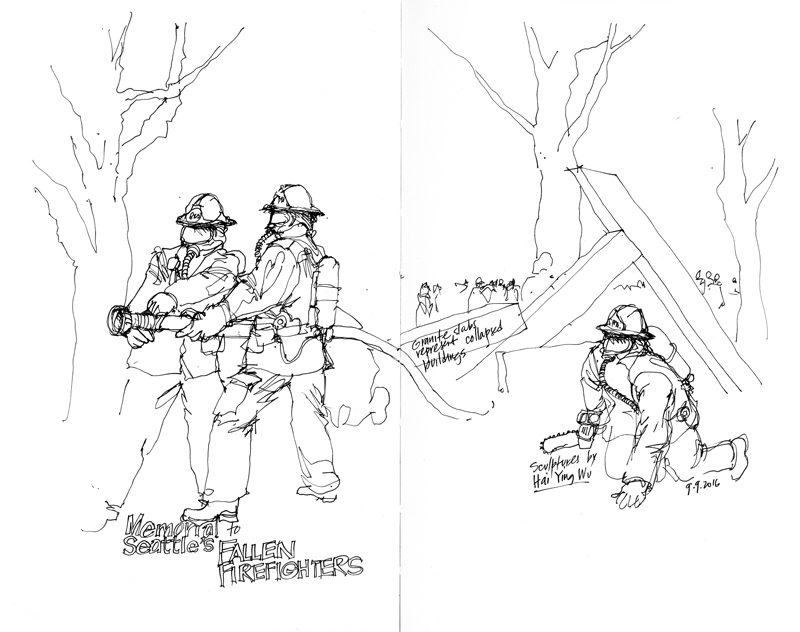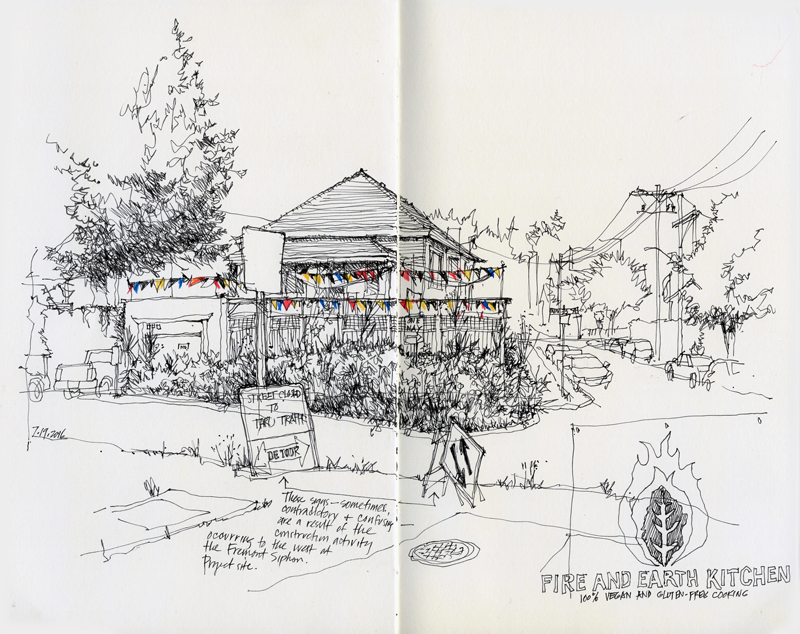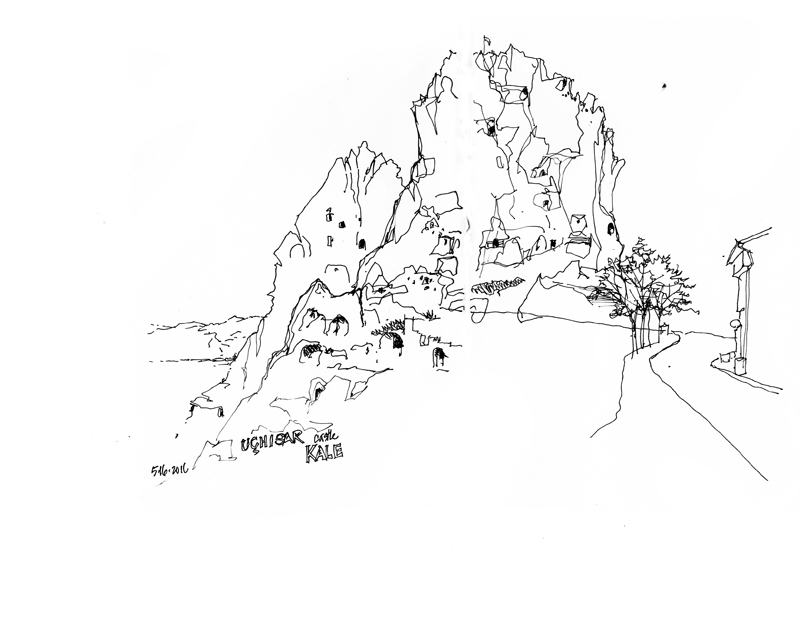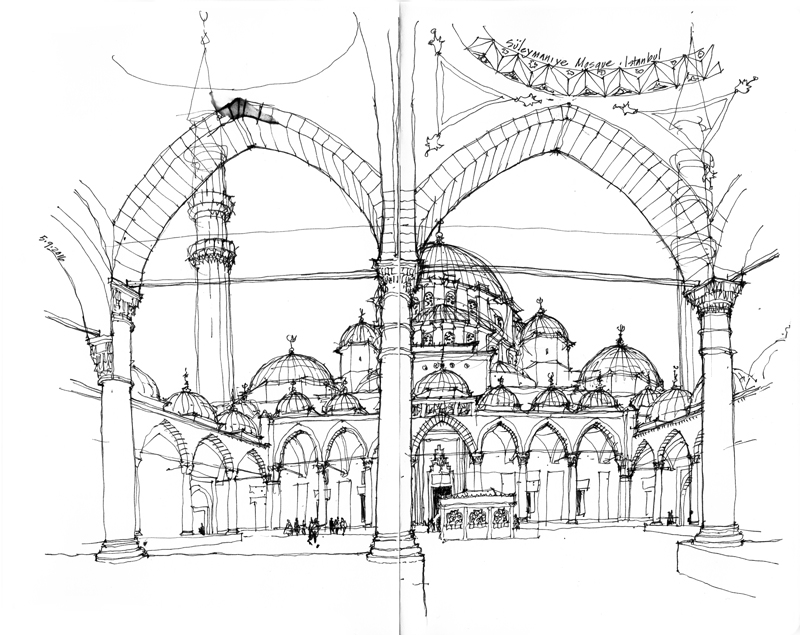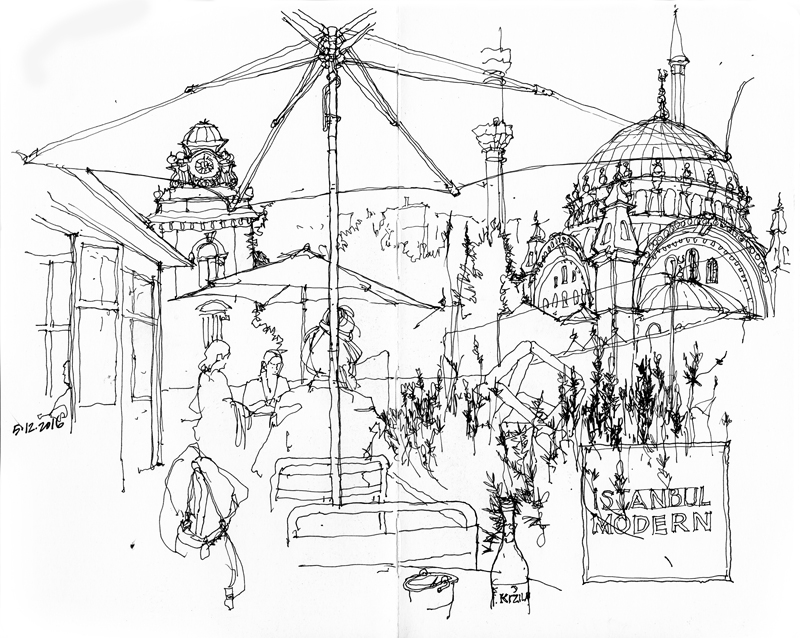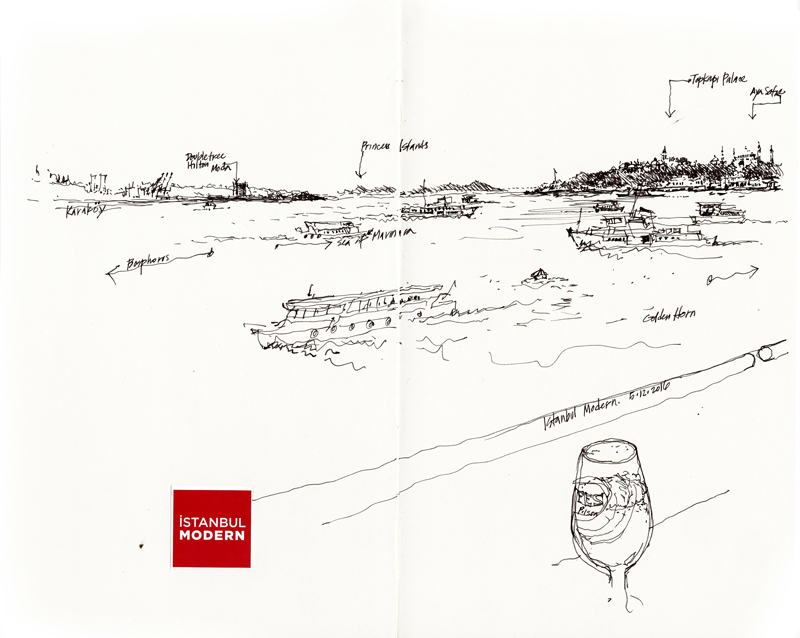Greetings and best wishes to one and all, with hopes of peace and justice in the new year.
Category Archives: Culture
Pacific Place: Looking Up, Looking Down
Today, the Seattle Times had an article in their Pacific NW magazine about the popularity of malls in this area. The piece leads off with the statement that, unlike other parts of the country, “Local malls are…thriving, thanks to Seattle’s strong economy, all the people moving here and the fact that don’t have too many.” And so it was a coincidence that the Seattle Urban Sketchers group met this morning at Pacific Place in downtown Seattle, a vertical shopping mall with a four-story, semi-cylindrical atrium space. The first view is looking up into the atrium while the second view is looking down from the top floor. The third view is a similar view looking down from the opposite end of the atrium, but done 6 years ago.
Honolulu Hale
When Joseph Fern became mayor of the City & County of Honolulu in 1907, he began a campaign to build a permanent city hall. Unfortunately, it was not until 1928, eight years after Fern’s death, that the idea came to fruition. Several local architects—C.W. Dickey, Hart Wood, Robert Miller, and Rothwell Kangeter & Lester—contributed to the design of the Spanish Colonial Revival style structure, which has an interior courtyard, staircase, and open ceiling modeled after the Bargello in Florence.
Originally called the Honolulu Municipal Building, today it is known as Honolulu Hale (Honolulu House) and is the official seat of government of the city and county, including the Mayor’s office and the City Council chambers. In 1978, Honolulu Hale was listed as a contributing property to the Hawaii Capital Historic District, which is listed on the National Register of Historic Places and includes Iolani Palace, Kawaiahaʻo Church, and the Territorial Building.
The Rainbow Bazaar
This is a view of a courtyard in the Rainbow Bazaar in the Hilton Hawaiian Village Hotel in Waikiki, dominated by a huge banyan tree. The resort hotel was originally conceived of and built by Fritz Burns and industrialist Henry Kaiser in 1955 on the site of the old Niumalu Hotel and eight oceanfront acres of the Ena Estate at the Ewa end of Waikiki. Over time, the hotel complex grew to 22 acres and was purchased by Conrad Hilton.
Growing up in Hawaii, my exposure to the world beyond Oahu’s shores was illuminated through books, movies, and TV shows. And so when the Rainbow Bazaar was created as part of the hotel complex in 1970, I was fascinated by the faux Asian environment, which included replicas of a Thai temple and a Japanese pagoda, as well as an entire Japanese farmhouse shipped from Japan. While some may criticize the appropriation of Asian culture to sell ethnic and tourist goods, for me walking through the Rainbow Bazaar even today is an opportunity to imagine and re-imagine visiting foreign places.
Green Lake Branch Library
Eight Seattle libraries were part of the 2,509 public libraries that Andrew Carnegie had funded from 1880 to 1929, both in the U.S. and around the world. The Green Lake Branch Library is one of the original eight and also one of the six which are still functioning as libraries today.
Designed by W. Marbury Somervell and Joseph S. Coté and opening in 1910, the Green Lake branch shares a common floor plan with the University and West Seattle branches but the three have differently styled exteriors. It is listed on the National Register of Historic Places and is also a landmark building listed by Seattle’s Landmarks Preservation Board.
Below are views of the Ballard and Fremont branches, two of the Seattle Carnegie libraries that I had drawn previously.
Scenes from Querétaro
Here are two scenes I sketched our last day in Querétaro. The first is of the Plaza de Armas, also known as the Plaza de Independencia. Around its periphery are 18th-century mansions and outdoor cafes. To the right is Palacio de la Corregidora, former home of the city’s mayor Don Miguel Dominguez and his wife Josefa Ortiz de Dominguez, who is revered as a heroine of the Mexican War of Independence. Today, the palace serves as the seat of the executive branch of the state government.
The second view is where Calle Venustiano Carranza splits off of Calle 5 de Mayo, another bifurcated view similar to the ones I drew in Tacoma a few weeks ago.
Pioneer Square Scenes
The first drawing is of an elegant art deco facade added in 1929 to unify and conceal two separate buildings that were built around 1900. The original drawings in the City of Seattle Department of Planning and Development are unsigned but the client was Rautman Plumbing and Heating Company.
In contrast to the contextual view above, this drawing is simply of a trolley stop at the Occidental Park terminus of the now defunct George Benson Waterfront Streetcar line that operated from 1982 to 2005. The popular tourist attraction used five 1924-era streetcars imported from Melbourne, Australia.
The third sketch is of the memorial to Seattle’s fallen firefighters in Occidental Park. While the artist Hai Ying Wu was inspired by the four firefighters that died while fighting a warehouse fire in Seattle’s Chinatown International District on January 5th, 1995, the sculptures are a tribute to all of the firefighters that have fallen in the line of duty since the department began in 1889. Surrounding the figures are slabs of granite intended to depict a collapsed building.
Something’s Cooking…
Down the block from us, we first heard the sounds of people scrubbing and cleaning, then noticed the subtle transformation that the installation of festive flags and canvas canopies can make to an outdoor space. And finally, the sign itself went up announcing the opening of Renee and Nicholas Price’s Fire and Earth Kitchen. These two chefs are offering group and private cooking classes as well as preparing meals for families and small groups to “share the secrets of effortless meal preparation, and expertly show how down to earth and delicious vegan meals can be.” For more information, see <fireandearthkitchen.com>.
Scenes from Cappadocia
 After the DCA–E Conference in Istanbul, we visited the Cappadocia region for a few days. This is the courtyard of the Kale Konak Cave Hotel where we stayed. Situated at the base of Uçhisar Castle, the enormous rock marking the highest point in the district, the setting offers a magnificent panorama of the surrounding countryside.
After the DCA–E Conference in Istanbul, we visited the Cappadocia region for a few days. This is the courtyard of the Kale Konak Cave Hotel where we stayed. Situated at the base of Uçhisar Castle, the enormous rock marking the highest point in the district, the setting offers a magnificent panorama of the surrounding countryside.
A highlight of our visit was walking through the Göreme Open Air Museum, a monastic enclave dating from the 4th through the 13th centuries. This is a view of the interior of Tokali Kilise, the Church of the Buckle, the largest of the more than 30 churches and chapels carved out of the relatively soft volcanic rock formations. Many of the sites contain frescoes still vibrant after all these years.
Scenes from Istanbul
Here are a few scenes of Istanbul gathered during our recent trip there for the DCA-E Conference. The first is entering the grand courtyard of the Süleymaniye Mosque, the Mosque of Sultan Süleyman the Magnificent and the largest in Istanbul, designed by Sinan the Architect.
The second was drawn while sitting at the outdoor cafe of Istanbul Modern, a museum featuring the work of contemporary Turkish artists. The museum is located within a warehouse converted by Tabanlıoğlu Architects, alongside the Bosphorus in the Tophane neighborhood. This view looks back toward the city and the Nusretiye Mosque, built in 1823–1826 by Sultan Mahmut II.
The third view is from a terrace of the Istanbul Modern, looking out toward where the Golden Horn meets the Bosphorus. It is truly amazing how well the numerous ferries and other ships skillfully navigate and share this waterway.

